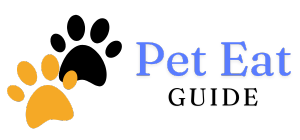Hamsters are tiny, adorable creatures that bring joy to many homes. As responsible hamster parents, we always want the best for our furry friends, which includes providing them with a varied and nutritious diet. With so many options available, it’s natural to wonder if certain human foods are safe for them. One question that often pops up is: “Can hamsters eat fava bean pods?” Let’s delve into the world of fava beans and hamsters to uncover the answer!
Can Hamsters Eat Fava Bean Pods?
The short answer is: it’s best to avoid feeding your hamster fava bean pods. While fava beans themselves, when properly cooked, can be given in very small amounts on occasion, the pods pose a greater risk. Fava bean pods contain compounds that can be difficult for hamsters to digest and may even be toxic in larger quantities. It’s simply not worth the risk when there are many other safer and more nutritious options available.
Potential Risks of Fava Bean Pods
Fava bean pods contain substances like vicine and convicine, which can cause a condition called favism, especially in individuals with a genetic predisposition. While hamsters aren’t typically prone to favism in the same way humans are, their small size makes them much more susceptible to the negative effects of even small amounts of these compounds. These effects can include digestive upset, anemia, and in severe cases, even organ damage. The tough, fibrous texture of the pods can also present a choking hazard for your hamster, especially if they try to hoard them in their cheek pouches.
Safer Alternatives for Your Hamster
Instead of fava bean pods, focus on providing your hamster with a balanced diet consisting of high-quality hamster pellets, supplemented with safe and nutritious fruits and vegetables. Some excellent choices include:
- Leafy Greens: Romaine lettuce, kale (in moderation), and spinach are good sources of vitamins and minerals.
- Vegetables: Carrots, broccoli (cooked), cucumber, and zucchini are all safe options.
- Fruits: Apples (without seeds), bananas (in moderation), blueberries, and strawberries can be offered as occasional treats.
Remember to always wash fruits and vegetables thoroughly before giving them to your hamster and offer them in small quantities to avoid digestive upset. Remove any uneaten fresh foods from the cage within 24 hours to prevent spoilage.
Pros and Cons of Feeding Fava Beans (without the Pod) to Hamsters
Even though we advise against feeding the pods, let’s consider the pros and cons of offering just the fava beans themselves, cooked and in very limited quantities:
- Pros:
- Source of Protein: Fava beans are a good source of plant-based protein.
- Nutrients: They contain vitamins and minerals like folate and iron.
- Cons:
- Digestive Issues: Can cause bloating, gas, and diarrhea if given in excess.
- Vicine and Convicine: Even cooked beans still contain some of these compounds, which can be problematic.
- Not a Natural Food: Hamsters don’t naturally eat beans, so it’s not an essential part of their diet.
Given the potential risks and the availability of safer and more nutritious options, it’s generally best to avoid feeding fava beans to your hamster altogether.
How to Introduce New Foods Safely
Regardless of the food, always introduce new items to your hamster’s diet gradually. Start with a very small piece and observe your hamster for any signs of digestive upset, such as diarrhea or loss of appetite. If your hamster tolerates the new food well, you can gradually increase the amount offered. However, remember that fresh foods should only make up a small portion of your hamster’s overall diet.
When introducing any new food, observe the following:
- Start Small: A piece the size of a pea is sufficient.
- Monitor: Watch for changes in behavior, appetite, and stool.
- Frequency: Limit new foods to once or twice a week.
- Hygiene: Always wash foods thoroughly before giving them to your hamster.
Frequently Asked Questions
Can hamsters eat other types of bean pods?
Generally, it’s best to avoid feeding your hamster any type of bean pod. Most bean pods contain high levels of fiber and certain compounds that can be difficult for hamsters to digest.
What are the signs of food poisoning in hamsters?
Signs of food poisoning in hamsters can include diarrhea, vomiting, loss of appetite, lethargy, and dehydration. If you suspect your hamster has food poisoning, contact your veterinarian immediately.
What is the best diet for a hamster?
The best diet for a hamster consists of high-quality hamster pellets, supplemented with small amounts of safe fruits and vegetables. Always provide fresh, clean water.
How much fresh food should I give my hamster?
Fresh food should only make up about 10-15% of your hamster’s overall diet. Offer small amounts of fruits and vegetables a few times a week, and remove any uneaten food within 24 hours.
Can hamsters eat cooked beans?
While some cooked beans, like properly cooked and plain kidney beans and chickpeas, can be given in very small amounts as an occasional treat, they are not a necessary part of a hamster’s diet and should be offered with caution due to potential digestive issues. As a general rule, beans should be avoided unless you have researched their safety extensively.
In conclusion, while it might be tempting to share all sorts of foods with your furry friend, it’s crucial to prioritize their health and safety. Fava bean pods are best avoided due to their potential toxicity and difficulty to digest. Stick to a diet of high-quality hamster pellets and safe, hamster-friendly fruits and vegetables to keep your little companion happy and healthy. Always research any new food thoroughly before offering it to your hamster, and when in doubt, consult with a veterinarian or pet nutrition expert. By following these guidelines, you can ensure that your hamster enjoys a long and fulfilling life!

